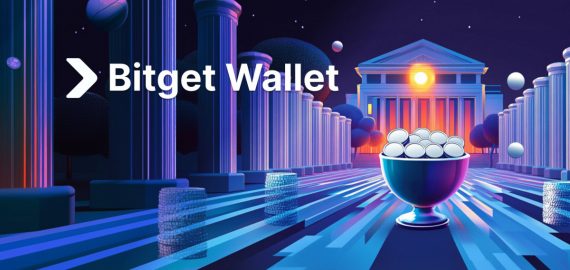Core Developers Open Source SRC Protocol’s Indexer Code, Including SRC-20, SRC-721, And SRC-101 Token Standards


In Brief
Core developers of the SRC protocol open-sourced its indexer code on GitHub, allowing users to utilize it freely.

Core developers of the SRC protocol announced the open-sourcing of its indexer code on GitHub. This allows users to query and utilize the front-end interface freely.
The SRC ecosystem encompasses three token standards: SRC-20, SRC-721, and SRC-101. SRC-20 facilitates the creation of both fungible tokens and non-fungible tokens (NFTs). Meanwhile, SRC-721 is primarily tailored for NFT applications, currently utilized by the OpenStamp platform for stamp and NFT transactions. Additionally, SRC-101 serves as a specialized domain name service standard developed by Bitname, a domain name service provider within the broader Bitcoin ecosystem.
The Bitcoin Stamps meta-protocol was originally designed using the Counterparty (XCP) Bitcoin transaction encoding techniques to serve as an immutable storage layer for NFT art, specifically Classic Stamps. It has since evolved to incorporate its own distinct meta-protocol, named SRC-20, for fungible tokens. This protocol operates independently of XCP, diverging from its transaction format while maintaining full autonomy.
The repository supports a variety of components within Bitcoin Stamps, encompassing Classic Stamps, OLGA (P2WSH encoded) tokens, SRC-721 Stamps, and SRC-20 tokens. OLGA Stamps utilizing P2WSH encoding were introduced at block height 833,000 to accommodate larger transaction sizes and reduce the cost of securely imprinting images onto the Bitcoin blockchain. Bitcoin Stamps are stored permanently within the UTXO (Unspent Transaction Output) set.
For the installation process, developers will require either a local full BTC node or an account with Quicknode.com or a similar service. Additionally, it will require a MySQL database or the default MySQL installation from Docker. Optionally, a local Counterparty node may also be set up.
What Are Bitcoin Stamps?
Bitcoin Stamps employs the Secure Tradeable Art Maintained Securely (STAMPS) protocol to embed digital images directly into the Bitcoin blockchain. This allows users to create ‘NFTs’ and broaden the applications of Bitcoin across various use cases.
It introduces a novel method for embedding base64-formatted image data into transaction outputs to enable the storage of artwork directly on the blockchain. The process involves encoding an image’s binary content into a base64 string, placing this string with STAMP: in the description key of a transaction, and transmitting it through the Counterparty protocol onto the Bitcoin ledger.
Due to the string’s length, Counterparty utilizes bare multisig by default, segmenting the data into outputs. This method ensures that the data remains preserved in a way that cannot be pruned from a complete Bitcoin Node, ensuring its immutable preservation.
Disclaimer
In line with the Trust Project guidelines, please note that the information provided on this page is not intended to be and should not be interpreted as legal, tax, investment, financial, or any other form of advice. It is important to only invest what you can afford to lose and to seek independent financial advice if you have any doubts. For further information, we suggest referring to the terms and conditions as well as the help and support pages provided by the issuer or advertiser. MetaversePost is committed to accurate, unbiased reporting, but market conditions are subject to change without notice.
About The Author
Alisa, a dedicated journalist at the MPost, specializes in cryptocurrency, zero-knowledge proofs, investments, and the expansive realm of Web3. With a keen eye for emerging trends and technologies, she delivers comprehensive coverage to inform and engage readers in the ever-evolving landscape of digital finance.
More articles

Alisa, a dedicated journalist at the MPost, specializes in cryptocurrency, zero-knowledge proofs, investments, and the expansive realm of Web3. With a keen eye for emerging trends and technologies, she delivers comprehensive coverage to inform and engage readers in the ever-evolving landscape of digital finance.


















































